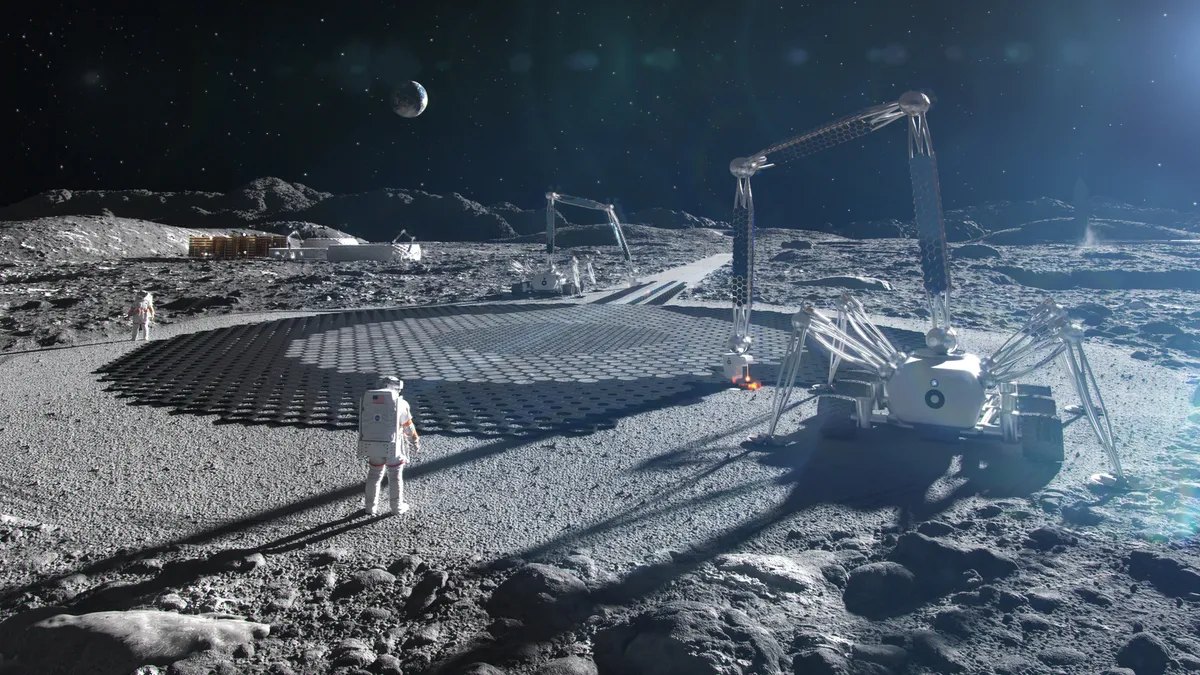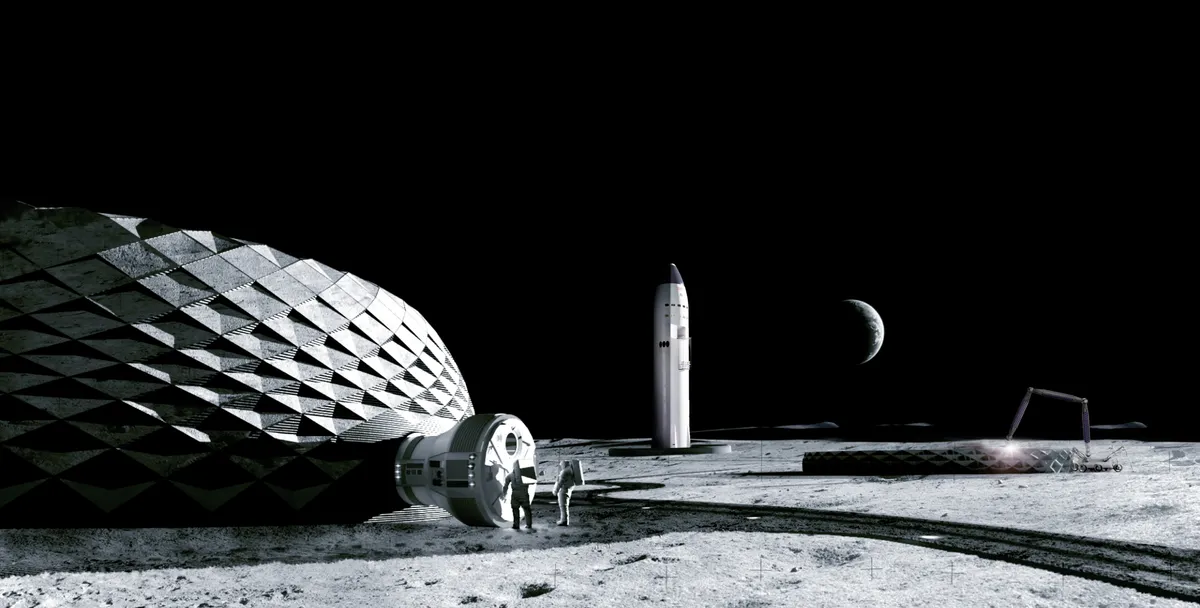Building on the moon: NASA awards Texas company $57 million for lunar construction system
Project Olympus just got a significant cash infusion


Artist’s illustration of lunar infrastructure built by ICON’s Project Olympus construction system, along with a SpaceX Starship in the background. (Image credit: ICON)
The company launched Project Olympus in 2020, reasoning that its tech could help build critical infrastructure like landing pads, roads and habitats on the moon and Mars. ICON has already produced a prototype of sorts — a simulated 3D-printed Red Planet habitat called Mars Dune Alpha(opens in new tab), which NASA will use to train astronauts for long-duration missions.
The newly announced NASA contract, granted via the agency’s Small Business Innovation Research program, will help the company mature its tech and procedures. ICON plans to use the money to learn how lunar soil, or regolith, behaves in lunar gravity using simulated samples and real ones brought back by the Apollo missions, company representatives said.
The company will also test its hardware and software on a space mission that simulates lunar gravity. And there will be an even more ambitious trial, if all goes according to plan.
“The final deliverable of this contract will be humanity’s first construction on another world, and that is going to be a pretty special achievement,” Ballard said in the statement. (He did not go into further detail.)
NASA’s interest in lunar construction systems is no surprise; through its Artemis program, the space agency is working to establish a sustainable, long-term human presence on and around the moon by the end of the 2020s.
The first Artemis mission, Artemis 1, launched on Nov. 16, sending an uncrewed Orion capsule to lunar orbit. Orion is due to return to Earth with an ocean splashdown on Dec. 11.
“In order to explore other worlds, we need innovative new technologies adapted to those environments and our exploration needs,” Niki Werkheiser, director of technology maturation in NASA’s Space Technology Mission Directorate, said in the same statement. “Pushing this development forward with our commercial partners will create the capabilities we need for future missions.”

